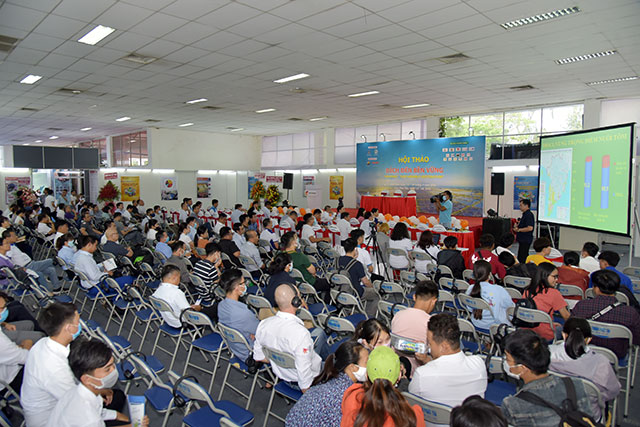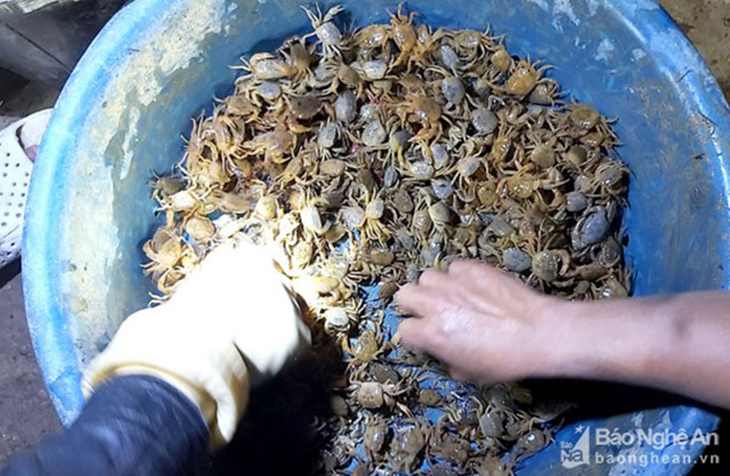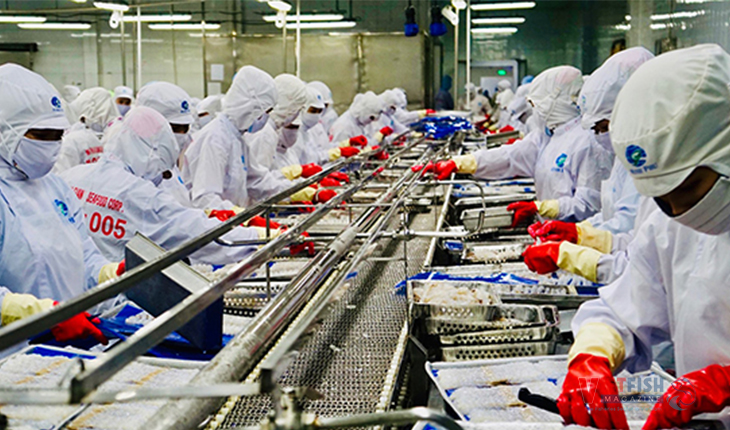The fishery industry misses the chance?
The last quarter of 2021 may be regarded as the “golden season” for Vietnam’s fishery industry amid the extremely active international market. However, the dramatic impact of the COVID-19 pandemic has worn the fisheries out. There is not much time left for enterprises to turn over while difficulties don’t stop arising. Is it possible for the fisheries to overcome these difficulties and grasp the chance?
Dramatical slump
According to VASEP, nineteen provinces and cities in the South are considered key areas of Vietnam’s fisheries; thus, any changes faced by them may leave a great impact against the total export turnover of the whole industry.
After the spread of the COVID-19 pandemic, just in two months, nearly 70% of enterprises were forced to stop producing due to failure in meeting requirements of the pandemic prevention and control, leaving around 30% of factories in ongoing operation. And yet, the overall capacity reached 30-35% with the pangasius sector alone making less than 20%. This is attributed to the fact that enterprises must adopt “three on-site” scheme (eat, live, and work on-site) with the lack of labor and material, leading to an inevitable breakage in the supply chain and a major increase in production cost.
As a result, the seafood export turnover experienced a sharp decrease in eight months. According to reports by the Directorate of Fisheries, seafood exports in August decreased by 31%, with shrimp declining by 36%, pangasius reducing by 31%, tuna and other marine species decreasing by 25% and octopus and cuttlefish falling by 23%. Exports to all destined markets showed a slump in August. Particularly, the Chinese and Japanese market recorded a decrease by 36%, the EU was 32% (the Netherlands was almost 50%, England was 48%, and Germany was 42%), the US was 16%, Australia was 35% and Canada with 37%.
Opportunity to turn over
According to the Working Group No.970 of the Ministry of Agriculture and Rural Development, Vietnam’s seafood producers may reach the threshold of losing the “golden opportunity” even though the world will be in major demand for seafood in the last months of 2021.
According to those reports, exports of frozen products (mainly seafood) are forecasted to increase within September 2021 and January 2022 when winter approaches the importing countries that will increase purchases to save for the 2022 New Year festival and other year end festivals. Besides, importing companies are preparing for long term contracts with fixed prices till the next summer.
Will the shrimp and fish sectors grasp at the chance?
Many enterprises say that Vietnam’s shrimp sector may be one step behind the market opportunity, with a faint possibility to grasp at the chance this year. The Chairman of Minh Phu Seafood Corporation Lê Văn Quang said that lots of shrimp orders were placed but they can’t not be fulfilled despite good prices. Enterprises are facing challenges in restoring production and taking care of employees.
From September on, factories start collecting materials for manufacturing and exports, but shrimp supply has been in difficulties with a highly potential shortage of material at the end of the year, even till the next year. This is easily predictable as the prolonged social distancing and harvest failure have led to an impossible reproduction.
General Director of Thien Phu Export Seafood Processing Company Ltd Hồ Thị Kiểng said in a press interview in late August that if the pandemic was controlled in September and enterprises were able to put back into operation and increase their capacity, plenty of golden opportunities would come. Or else, enterprises will have to deal with lots of difficulties. A potential breakage of supply and export chains is inevitable.
A decrease in shrimp farming has been recorded. Deputy Director of the Cà Mau provincial Agriculture and Rural Development Department Châu Công Bằng said that the stocking reached around 30-40% as compared to the same period last year, even in some areas farmers refused to stock.
“Even if the pandemic is controlled soon, social distancing is removed and production is back to normal, the shortage of material will be acute”, said Lê Văn Quang. As for the pangasius sector, the overall capacity has ranged at 10-20% since July. The pangasius sector was hit first during the fourth wave, with as many as 50% of enterprises in key areas being forced to close, leaving a large amount of oversized pangasius. Besides, high density of large pangasius resulted in natural death.
VASEP’s Deputy General Secretary Tô Tường Lan said that a halt in production has made enterprises losing opportunities amid globally high demand in pangasius, resulting in a slump in export volume. In August, the pangasius export volume decreased by 28.5% as compared to the same period last year and it may fall by over 30% in September. Due to a slow recovery, many enterprises will lose orders in the last months of the year and not dare to receive new ones.
Agreeing with Ms Tô Tường Lan’s opinion, VASEP’s General Secretary Trương Đình Hòe said that exports recovered only when pangasius producers restored production and put back capacity. Prices of pangasius material would rise then.
Endless worries
Seafood enterprises have been struggling with production costs and rapid increase in transportation costs since earlier this year, resulting in an imperative increase in selling prices. At the same time, the Chinese market, which has been a large destination but full of potential risks, continued to tighten regulations in importing frozen food, seafood included, in an effort to prevent the coronavirus. This has placed endless worries on seafood enterprises in general and pangasius exporters in particular.
On the other hand, according to the Directorate of Fisheries, together with the pandemic, seafood exports have been dealing with difficulties in material prices and potential commercial risks in the US market (anti-dumping duty on shrimp or pangasius) and instability of global sea transportation.
Many experts said that the COVID-19 pandemic hit pangasius farming plans, trading and exports at the nick of time when markets displayed positive signs in the last two quarters of the year. Moreover, the production, processing and exports of seafood, especially pangasius after the social distancing period are presenting real difficulties with only 30-40% of enterprises being able to recover. While the rest of them are facing challenges or need more time to restore their operation, resulting in a forecast of fatigue in seafood exports in the last months of the year.
To reach the target of exports in this fiscal year, the Directorate of Fisheries plans to enhance the quality control and certificate verification of consignments, continue the negotiation to restore the market share in Saudi Arabia, and work with ministries, sectors and provincial departments to remove the EU’s yellow card. According to the Import and Export Department (under the Ministry of Industry and Trade), enterprises should take good advantage of already effective free trade agreements which have been a good base of support for the fishery industry.
To turn around from losses, enterprises are looking forward to further support from the Government, institutes, sectors and local departments so that they can recover the supply chain, production and exports in the last three years, especially from October when demand and orders all increase.
|
Lots of shrimp orders were placed but they can’t not be fulfilled despite good prices. Enterprises are facing challenges in restoring production and taking care of employees. Lê Văn Quang Chairman of Minh Phu Seafood Corporation |
| >> According to the Working Group No.970, there are 324/449 seafood production facilities in the southern provinces that meet requirements of the “three on-site” scheme and continue to operate, making 72%, while the rest are temporarily forced to close. The last months of the year start the harvest season of shrimp and pangasius. Local authorities need to produce a cooperation scheme in pandemic control, especially transportation, so as to facilitate enterprises and farmers. Employees working in the supply chain should be injected with vaccines as soon as possible. |






